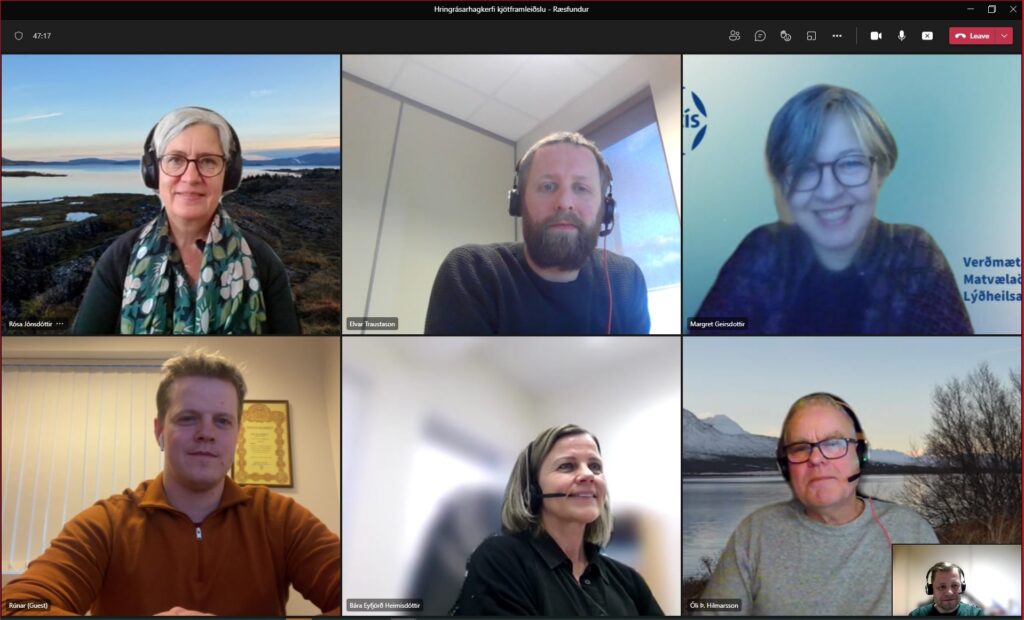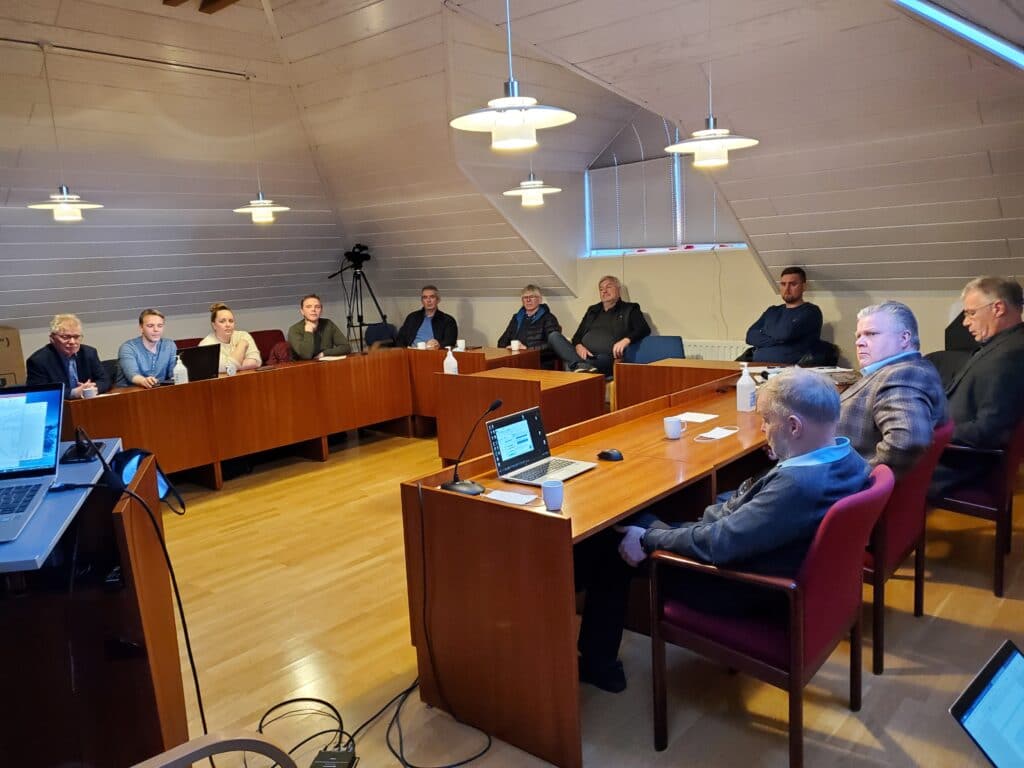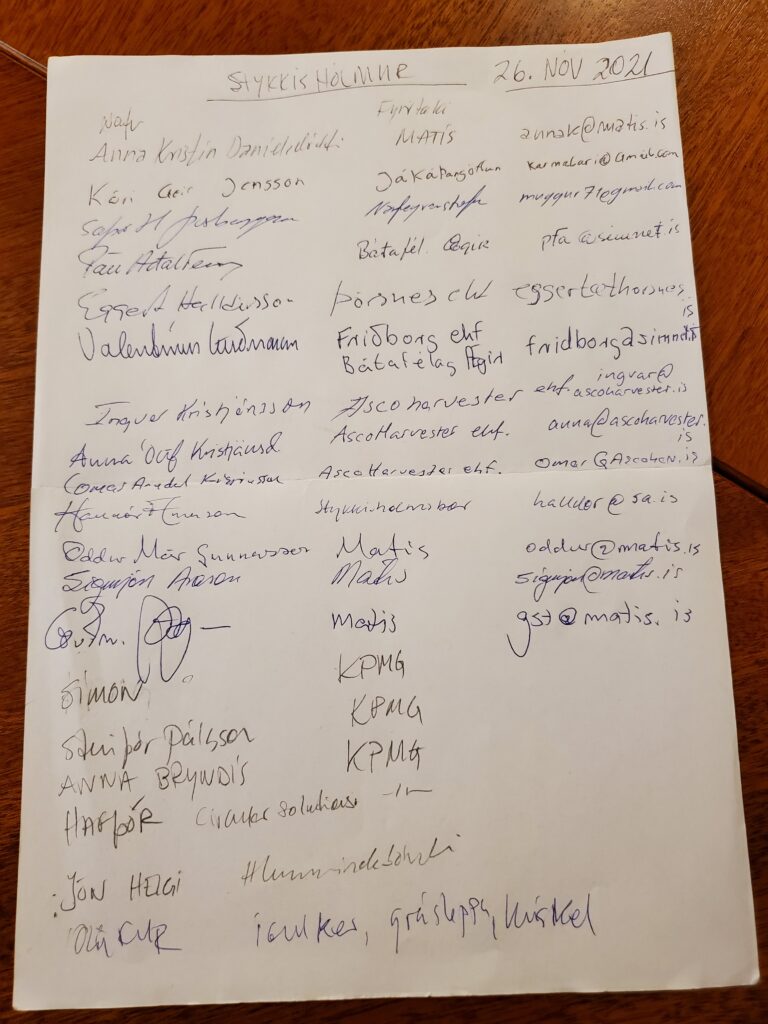Skýrslan er lokuð / This report is closed
Author: admin
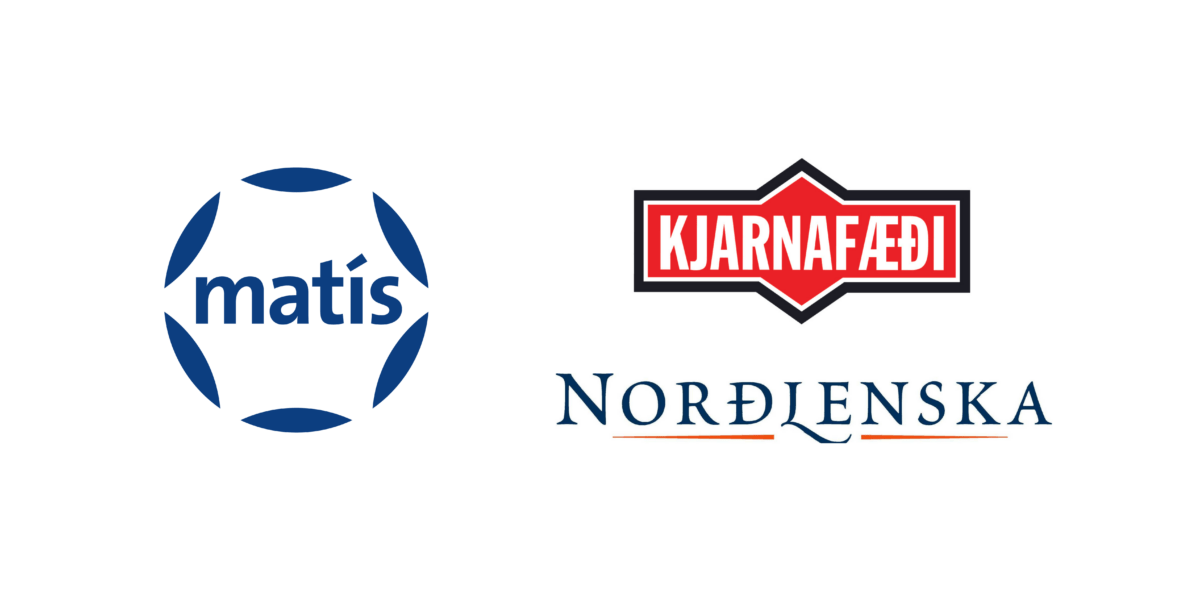
An introductory meeting was held today in the project Cycle Economy of Meat Production. This is an exciting collaborative project between Matís and Kjarnafæði / Norðlenska that deals with the utilization of by-products from meat production.
The meeting of course took into account the current disease control rules and took place through teleconferencing equipment, as can be seen in the attached picture.
The aim of the project is to improve the production and handling of raw materials by identifying opportunities for the utilization of by-products from slaughter. Based on the results of an analysis that has already taken place on by-products at Kjarnafæði / Norðlenska, it is proposed to study two main options in the project; on the one hand, to investigate the possibility of utilization and processing of animal blood and, on the other hand, the utilization of general slaughter waste as a raw material for pet food production. A life cycle analysis will also be performed on current processes and the new processes that will be analyzed. The novelty of the project is the use of known solutions to improve domestic utilization and production and to develop products that are new in Iceland.
It will be possible to follow the progress of the project on its project page here: Meat production cycle economy
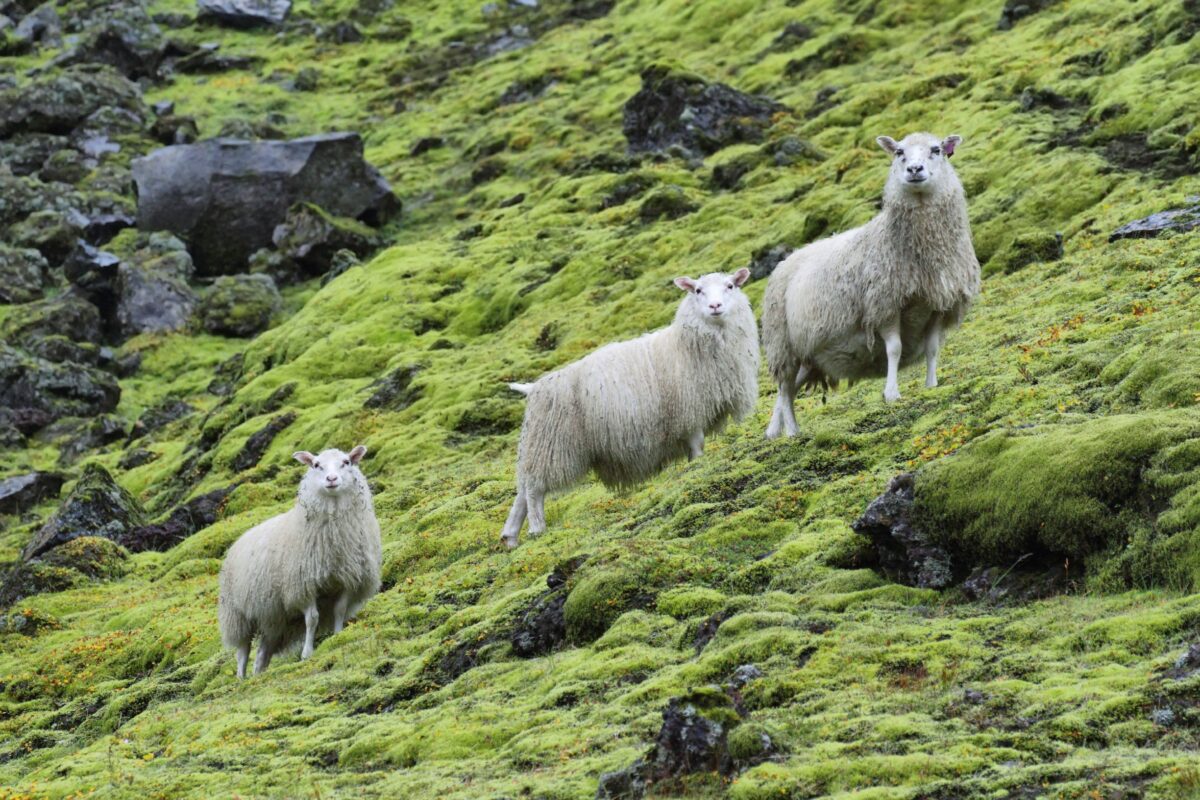
The recognized protective genotype against scrapie in sheep, ARR, has now been found for the first time in an Icelandic sheep. This is a great meeting because this is a genotype that is internationally recognized as a protector and has been worked on in many parts of Europe to eradicate horseradish with good results.
The genotype has never before been found in sheep in Iceland, despite extensive searches. Matís has been offering scrub gene analysis since 2004. Matís has traditionally sequenced the scraping gene in about 3,500 sheep and never before found this variability. Specialists at the University of Iceland Laboratory of Pathology at Keldur have also conducted a systematic search for this genotype for years.
Matís received samples for analysis from an extensive research project carried out by RML, the University of Iceland Laboratory of Pathology at Keldur and Karólína Elísabetardóttir, a sheep farmer in Hvammshlíð. The analyzes confirmed the previous result, but at the same time four additional related artefacts were found on the farm that carry this genotype.
Matís is currently working in collaboration with Stefanía Þorgeirsdóttir, a specialist at the University of Iceland's Experimental Center for Pathology at Keldur, on the introduction of new methods for diagnosing the scraping gene. The aim of the study is twofold. First, to add more genetic sites to the regular analysis, including the newly discovered protective genotype (site 171) and possibly more variable sites within the scraping gene. Secondly, ways will be sought to increase the efficiency and capacity of scrapie analyzes, with the aim of reducing the cost of analyzes so that it will be possible to reduce the price of analyzes to farmers.
More information about this remarkable discovery can be found on the RML website: Protective genotype ARR found
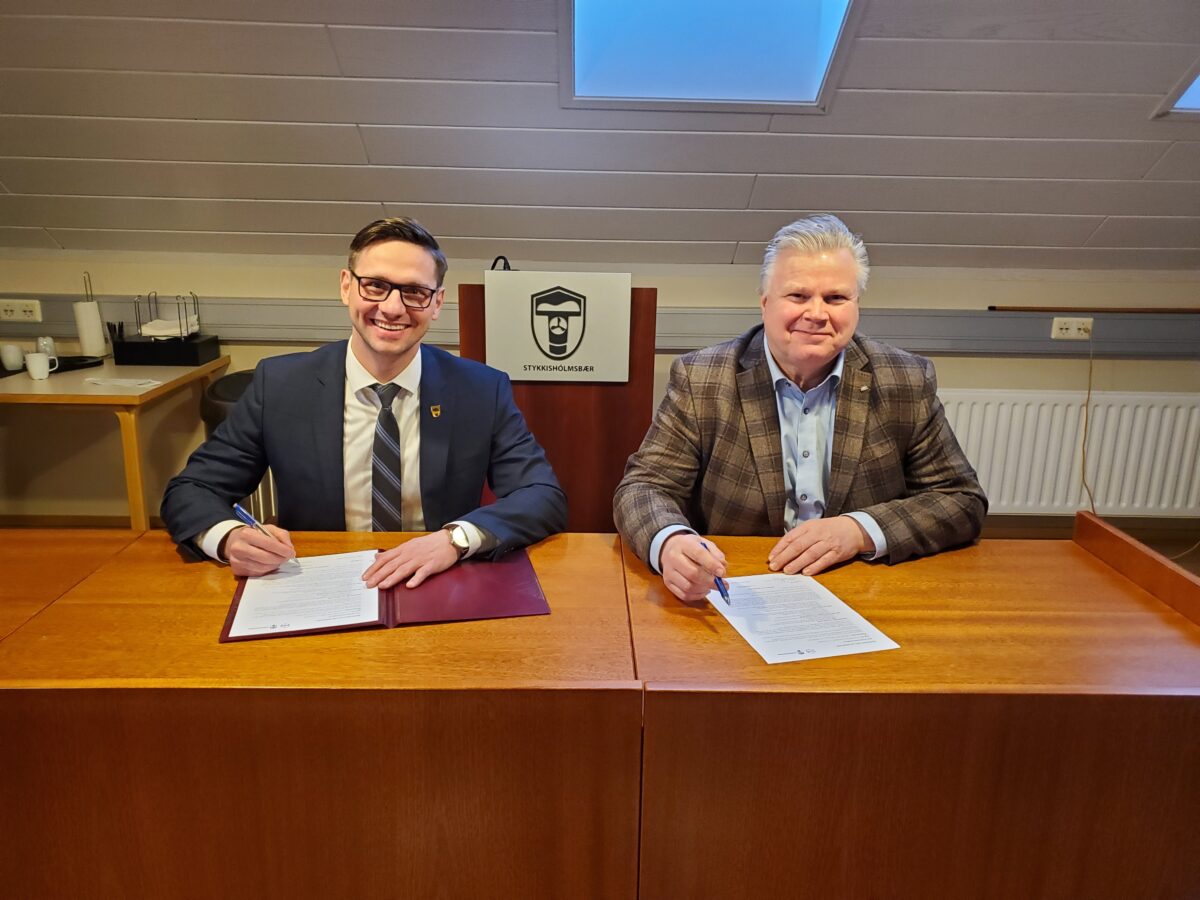
Stykkishólmsbær and Matís have reached an agreement on the development of co - operation in the municipality of Stykkishólmur with an emphasis on education, innovation, research and business development within the municipality. Both parties to the agreement will make the most of their respective strengths and infrastructure.
Stykkishólmsbær held a brainstorming meeting with Matís, KPMG and representatives of the business community in the area on 26 November. Representatives of the business community were educated and a lively discussion ensued about the opportunities for increased value creation and the strengthening of the business community regarding sustainable food production in the area.
Growth in employment and innovation in Stykkishólmur
The mayor, together with the chairman of the Business and Innovation Committee, visited companies in Stykkishólmur in order to become better acquainted with the activities of companies and institutions in the town as well as the available challenges and opportunities and explore how Stykkishólmsbær can better support the interests of the business community in its policy and advocacy..
"The economy is a foundation based on each place and the lifeblood of all societies. It is important to be in good contact with the business community and understand its needs, " according to Jacob.
The town council of Stykkishólmsbær appointed a working group to strengthen the town's economy, which is now working to identify opportunities for strengthening the economy on the basis of regional strengths that will be useful in the town's employment strategy. The working group includes representatives from the Association of Local Authorities in Western Iceland and the Institute of Regional Development. Among other things, it looks at value creation in connection with the sustainable utilization of Breiðafjörður's resources. Is the agreement of Matís ohf. and Stykkishólmsbær are part of the same journey.
"With this, Stykkishólmsbær wants to ensure favorable conditions for companies, be a driving force for good works and support research and innovation," underlines Jacob.
Agreement signed at a brainstorming meeting in Stykkishólmur
Several representatives of the business community in Stykkishólmur, together with the mayor and the chairman of the business and innovation committee, had a brainstorming meeting with representatives from Matís and KPMG on 26 November.
The meeting discussed research, innovation, start-up activities, food production and responsible utilization of Breiðafjörður's resources with the aim of promoting sustainable utilization of resources and increased value creation in the area. At the end of the meeting, Jakob Björgvin Jakobsson, mayor, and Oddur Már Gunnarsson, CEO of Matís, signed an agreement on cooperation between Stykkishólmsbær and Matís.
There is a lot of growth and development in the field of sustainable product and food production in Stykkishólmsbær and the goal of Stykkishólmsbær and Matís is to support as much as possible individuals and companies in the area for value and innovation in the food industry and further processing of regional products, and thus promote increased prosperity, food security, food security and improved public health for Icelandic society.
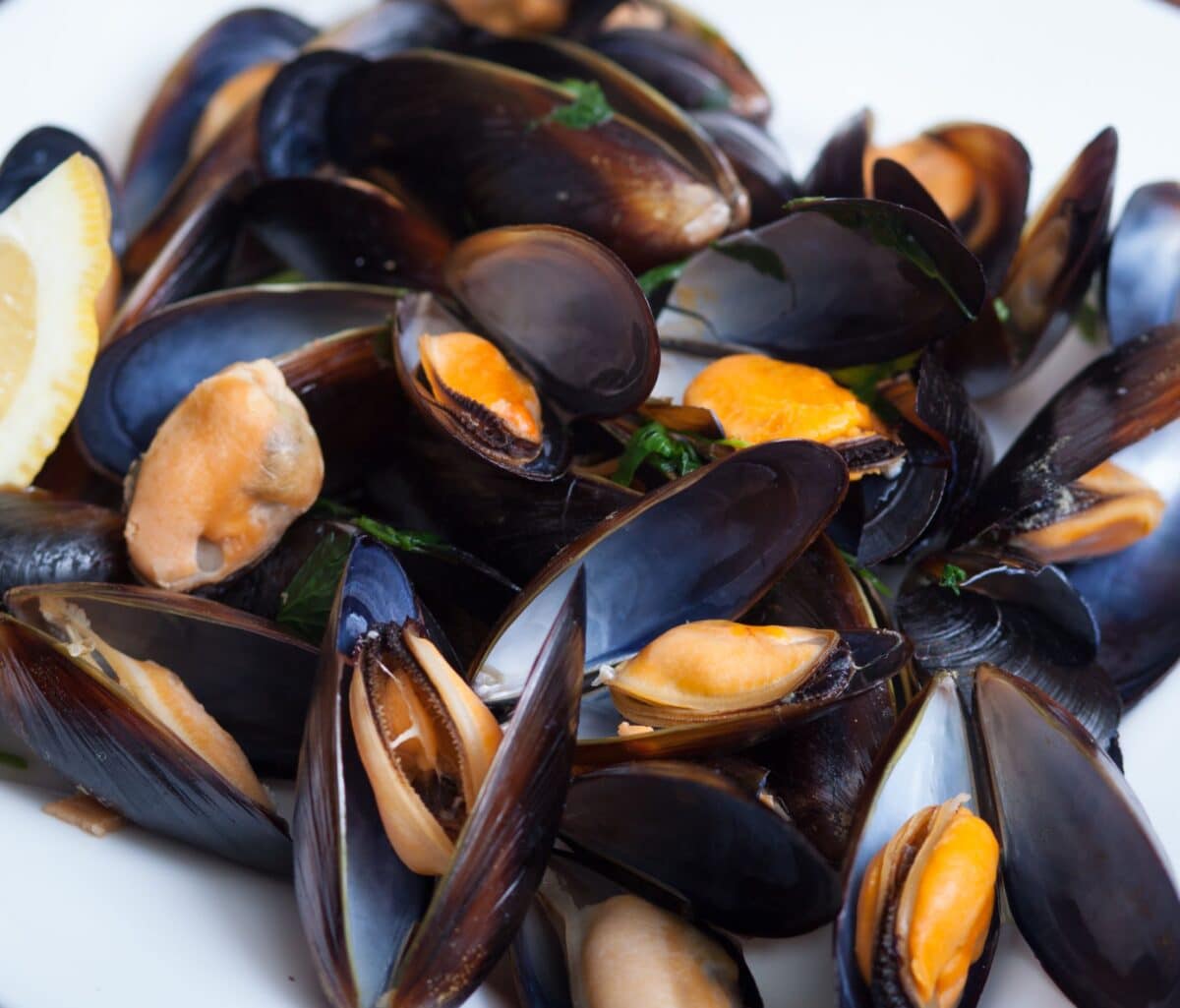
Recently, a report was published on the results of continuous monitoring of undesirable substances in seafood from the resource for the year 2021. For years, Matís has been responsible for tasks related to collecting data and publishing a report on this systematic monitoring.
The aim of the project is to demonstrate the status of Icelandic seafood in terms of safety and health, and to use the data in the risk assessment of food to ensure the interests of consumers and public health.
The project builds a knowledge base on the amount of undesirable substances in economically important species and marine products, it is defined as a long-term project where expansion and revision are constantly necessary.
The results showed that Icelandic seafood contains insignificant amounts of persistent organic pollutants such as dioxins, PCBs and pesticides. At the same time, all samples of seafood for human consumption were well below EU maximum levels for persistent organic pollutants and heavy metals. The concentration of so-called ICES6-PCBs was also found to be low in the edible part of the seafood, compared to the EU maximum level.
Further explanation of the results as well as the report as a whole can be found here:
This report summarizes the results of monitoring of undesirable substances in edible seafood in 2021. The monitoring began in 2003 with the help of the then Ministry of Fisheries, the current Ministry of Industry and Innovation, and Matís ohf. on the collection of data and the publication of reports for this systematic monitoring during the period 2003-2012. Due to a lack of funds for this monitoring project, this important data collection was suspended as well as the publication of results in the period 2013-2016. The project started again in March 2017, but due to a lack of funds, it now only covers the monitoring of undesirable substances in edible parts of seafood from the resource intended for human consumption, and not fishmeal and fish oil for feed. For the same reason, chemical analyzes of PAHs, PBDEs and PFCs are no longer performed.
The aim of the project is to demonstrate the status of Icelandic seafood in terms of safety and health, and to use the data in the risk assessment of food to ensure the interests of consumers and public health. The project builds a knowledge base on the amount of undesirable substances in economically important species and marine products. It is defined as a long-term project where expansion and revision are constantly needed.
In general, the results obtained in 2021 were in line with previous results from 2003 to 2012 and 2017 to 2020. The results showed that Icelandic seafood contains an insignificant amount of persistent organic pollutants such as dioxins, PCBs and pesticides.
In this report, the maximum levels of the European Union (EU) for dioxins, dioxin-like PCBs (DL-PCBs) and non-dioxin-like PCBs (NDL-PCBs) in food were according to Regulation no. 1259/2011 used to assess how Icelandic seafood meets EU requirements. The results for 2021 show that all samples of seafood for human consumption were well below EU maximum levels for persistent organic pollutants and heavy metals. The concentration of so-called ICES6-PCBs turned out to be low in the edible part of seafood, compared to the EU maximum value according to Regulation no. 1259/2011. The results also showed that the concentration of heavy metals, such as cadmium (Cd), lead (Pb) and mercury (Hg) in Icelandic seafood was always below the EU maximum values.
This report summarizes the results obtained in 2021 for the screening of various undesirable substances in the edible part of Icelandic marine catches.
The main aim of this project is to gather data and evaluate the status of Icelandic seafood products in terms of undesirable substances and to utilize the data to estimate the exposure of consumers to these substances from Icelandic seafood and risks related to public health. The surveillance program began in 2003 and was carried out for ten consecutive years before it was interrupted in 2013. The project was revived in March 2017 to fill in gaps of knowledge regarding the level of undesirable substances in economically important marine catches for Icelandic export. Due to financial limitations the surveillance now only covers screening for undesirable substances in the edible portion of marine catches for human consumption and not feed or feed components. The limited financial resources have also required the analysis of PAHs, PBDEs and PFCs to be excluded from the surveillance, providing somewhat more limited information than in 2013. However, it is considered a long-term project where extension and revision are constantly necessary.
In general, the results obtained in 2021 were in agreement with previous results on undesirable substances in the edible part of marine catches obtained in the monitoring years 2003 to 2012 and 2017 to 2020.
In this report from the surveillance program, the maximum levels for dioxins, dioxin-like PCBs and non-dioxin-like PCBs in foodstuffs (Commission Regulation 1259/2011) were used to evaluate how Icelandic seafood products measure up to limits currently in effect.
The results show that with regard to the maximum levels set in the regulation, the edible parts of Icelandic seafood products contain negligible amounts of dioxins, dioxin like and non-dioxin-like PCBs. In fact, all samples of seafood analyzed in 2021 were below EC maximum levels.
Furthermore, the concentration of ICES6-PCBs was found to be low in the edible part of the marine catches, compared to the maximum limits set by the EU (Commission Regulation 1259/2011).
The results also revealed that the concentrations of heavy metals, eg cadmium
(Cd), lead (Pb) and mercury (Hg) in the edible part of marine catches were in all samples well below the maximum limits set by the EU.
View report
In the project, the shelf life of vegetables was examined. Sensory evaluation of tomatoes, potatoes, carrots and beets was carried out for 6 weeks in the summer of 2021. The vegetables were stored under three different storage conditions: (1) Cooler 1 which was at 2 ° C, (2) cooler 2 at 12 ° C and (3) a room that was at about 22 ° C. Sensory evaluation was performed on carrots and beets from a room at 2 ° C and a sensory evaluation of tomatoes and potatoes from a room at 12 ° C. In addition, a quality inspection was carried out on the four vegetable species from all three compartments. Humidity and temperature were monitored in each room, vegetables were weighed to monitor shrinkage and samples were taken for bacterial measurements.
Quality factor (QIM) method was used for sensory evaluation. Sensory evaluation scales were improved throughout the project. Sensory evaluation results using these scales showed that they can be useful in assessing the freshness of the vegetables studied. Bacterial measurements were performed on tomatoes and paper packaging of tomatoes. The results of those measurements showed that microorganisms grow well on paper packaging.
Beets and carrots lost a considerable amount of weight, but it must be borne in mind that the humidity in the refrigerated rooms was not as good as it could be. Quality assessed by sensory evaluation became poorer with time for all the vegetable species. The quality deteriorated relatively most for tomatoes but least for carrots. This is due to the different shelf life of the species. In the sixth week of the study, all vegetables except carrots were considered unfit for consumption.
The work was part of the project Improved quality, shelf life and less waste in the value chain of Icelandic vegetables but it is funded by the Food Fund. Jóhanna Elín Ólafsdóttir and Guðný Sif Sverrisdóttir were summer employees at Matís for the project. The work yielded important results in the development of sensory evaluation scales and the results will be utilized in shelf life research on vegetables in the future.
The Quality Index Method (QIM) was used for sensory evaluation. Scales were developed for tomatoes, potatoes, carrots and rutabagas. The method was found useful for sensory evaluation of the freshness of vegetables, but the scales need further development. The quality of the vegetables as measured by the QIM method decreased throughout the experiment. The weight of rutabaga and carrots decreased considerably throughout the experiment.
This work was a part of the project Improved quality, shelf-life and reduced waste in the value chain of Icelandic vegetables. The work was important for the development of suitable QIM scales for sensory evaluation of vegetables. Future shelf-life experiments will benefit from this work.
View report

Last night the series began We eat and enjoy on the RÚV, but in the episodes a diverse group of people will be watched, and their nutritional and eating habits will be thoroughly reviewed in order to see how it is possible to combine these two issues, ie. to be nourished and enjoyed.
The episodes Nærumst og njótum are conceptual and supervised by Anna Sigríður Ólafsdóttir, professor of nutrition and are an important contribution to public health in Iceland. In this first episode, the audience got to know the subject, participants and opinion leaders, but in the next episodes, the food life of seven homes in Iceland will be followed. The homes are diverse, ranging from people living alone to large extended families and participants ranging in age from 10 weeks to seventy.
"Food is a common thread throughout our lives, but we eat only to keep it alive. Food is an integral part of physical, mental and social health. We are emotionally connected to food and it is a big part of our culture. "
Kolbrún Sveinsdóttir, food scientist and project manager at Matís, is one of the experts hired to give opinions and discuss various issues related to food and eating habits. She focused on processed foods, the difference between them and fresh foods, and the various processing methods that can be both good and bad.
The episodes will be on the RÚV program in the next few weeks, but the first episode is already available in the player here: Eating and enjoying, first episode.


